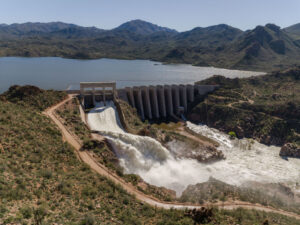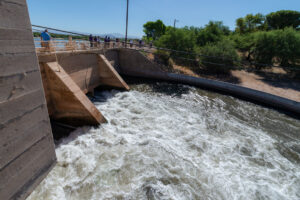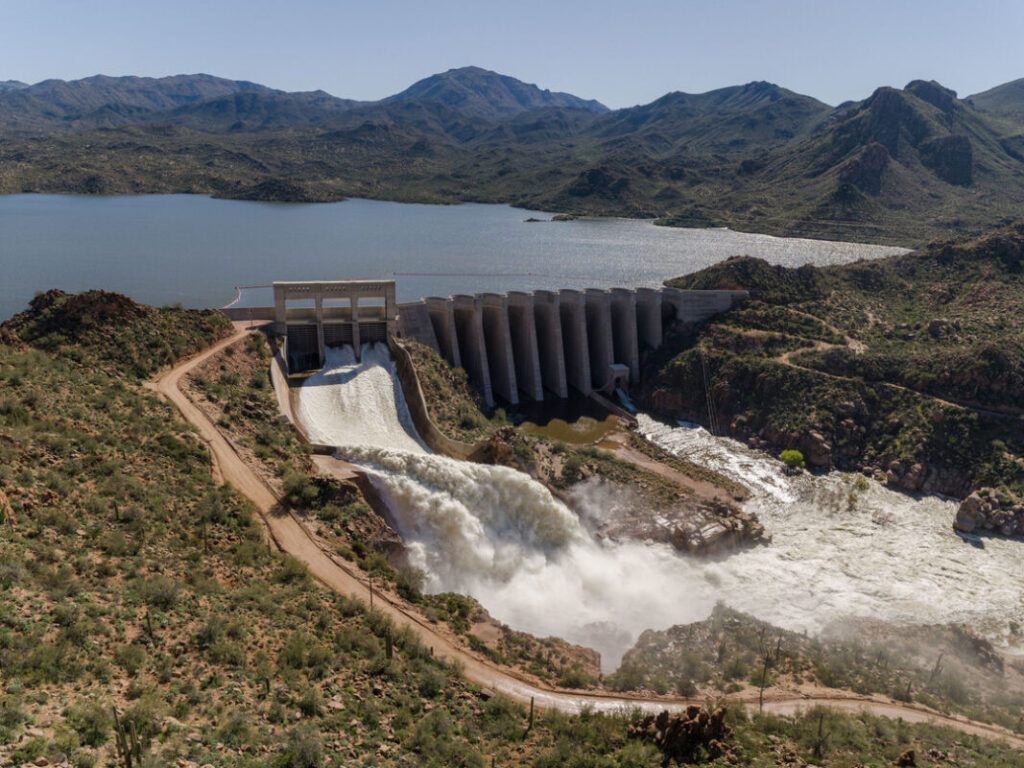By SRP Associate General Manager & Chief Water Resources Executive Leslie Meyers and Greater Phoenix Chamber CEO Todd Sanders
Many Valley residents have noticed water flowing in the normally dry Salt River as snow from this active winter continues to melt.
As the state continues to grapple with the Colorado River shortages and a drought that has persisted for decades, this winter has been a huge relief for SRP’s reservoir system, which provides water to about 2.5 million Valley residents.

Because of the productive storms experienced this winter and the subsequent runoff, SRP reservoirs on the Verde and Salt Rivers have reached or will soon reach full capacity. Full reservoirs provide three years of water supply for SRP customers.
In March, SRP began releasing water from its dams into the normally dry Salt River, which runs from the East Valley through Tempe Town Lake and into the West Valley. These releases are likely to continue through April.
SRP’s flood operations prioritize the safety of infrastructure, as well as the protection of human health and safety. While the company strives to maximize the amount of water stored in its six reservoirs, SRP manages its releases to ensure that the reservoir system can safely manage the anticipated runoff expected to enter the reservoirs this spring.
SRP has been actively pursuing infrastructure alternatives to address sedimentation, supply, storage, and reliability on the Verde River, and 2023 has reinforced the need to increase storage capacity.
A group of 23 partners, including agricultural, municipal, and tribal organizations, have committed to work with the Bureau of Reclamation on a feasibility analysis of options to modify Bartlett Dam to increase its capacity to store and more efficiently manage water resources provided by the Verde River.

SRP is also working with the Bureau of Reclamation and the U.S. Army Corps of Engineers to evaluate options to extend the release period for water in the Roosevelt Dam flood control space. This would allow SRP and its partners more time during the runoff season to put the water to beneficial use or store it underground for later use rather than releasing it into the Salt River bed.
The Valley has a diverse supply of water that is unlike any other community in the Southwest. These resources include surface water from our lakes and rivers, groundwater, renewable water supplies stored underground in basins for future pumping, water from the Colorado River delivered into the Central Arizona Project canal, and reclaimed wastewater.
Unlike the Colorado River system, which is facing severe shortages due to the drought and a structural deficit where annual demand exceeds annual runoff, the Salt and Verde reservoir systems are nearly in balance, where annual demand is close to the annual supply.
As Arizona monitors the water shortage on the Colorado River carefully, and as we recognize what our state has planned for short-term shortages through innovations such as the Arizona Water Banking Authority, we must continue investing in infrastructure that supports the long-term vitality of our economy.
Continued state budget allocations for our water infrastructure, including additional storage capacity and delivery systems in preparation for a more variable climate, are critical to a sustainable future for Arizona. Innovative partnerships combined with a continued focus on flexible and adaptable operations will set up our communities for future success.
Now is the time for businesses to come together with a renewed focus on the conservation efforts of Arizona’s water resources. These joint efforts will help secure the continued prosperity of the Valley and State. SRP and the Greater Phoenix Chamber encourage the business community to engage in discussions about the State’s water supply, how it impacts our economy, and how we can support and encourage innovative water policies.


